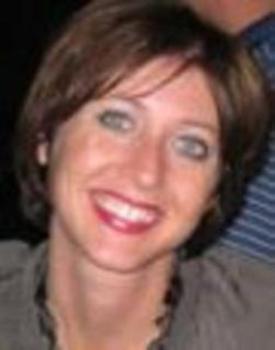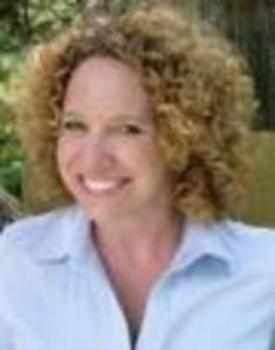Introduction
In years past, a long-term care (LTC) facility was a place that provided care for people who were often too frail or "sick" to be considered candidates for any type of rehabilitative treatment. A long-term care facility, such as a nursing home, had a stigma of being a place an individual went to live out their final days, often with no hope for living with much quality of life. Today, in addition to meeting health and social needs, the long-term care facility provides rehabilitative services to individuals who demonstrate potential for improvement in independent functioning of daily living skills.
Opportunities for speech-language pathologists to care for the growing number of elderly in a long-term care setting are growing faster than professionals can be trained. The SLP who is considering practicing in the long-term care environment should have a good understanding of the population, of common diagnoses, and the challenges unique to this environment. This knowledge will be helpful in developing goals that are useful, functional, and successfulwhich optimizes the SLP's role in an LTC facility.
Population
By reviewing some of the statistics surrounding the rapid growth of the elderly population, one can get a sense of the financial impact that aging will have in the United States and the importance of keeping the aging population as healthy and independent as possible. Currently, there is no shortage of elderly individuals in the United States. In fact, the oldest old (persons 85 and over) are projected to be the fastest growing segment of the aging population into the next century. About one in eight Americans were elderly in 1984. That number will increase to one in five by the year 2030. There are approximately 18,000 nursing homes in the United States all with an 87% occupancy rate. This translates to 1.9 million beds and 1.8 million patients; 91% of the nursing residents are age 65 and over (U.S. Census Bureau, 2008).
Not all LTC residents remain in that setting permanently, in fact, the data shows that LTC rehabilitation programs can be very successful in allowing this population to improve functioning enough to return to a more independent setting. For every 100 patients, 38 will improve and be discharged to home or to a more independent living environment, including an independent living facility or assisted living facility. The average length of stay for a patient to receive rehabilitation reimbursed by Medicare is 23 days. For those individuals living permanently in the LTC environment, the average length of stay is 2.44 years (Bernstein et al., 2003).
Those individuals in need of acute treatment who are using their Medicare benefits to fund treatment services, generally will use their benefits under Part A Medicare. These individuals are entitled to up to 120 days of rehabilitation as long as skilled services are needed, meaning skilled physical therapy (PT), occupational therapy (OT), speech-language services (ST), or nursing services. To continue receiving reimbursement for the entire 120 days, the participant needs to be making documented progress in treatment and continue to demonstrate the need for skilled nursing services. Currently, Medicare A reimburses the first 20 days at 100% and will reimburse for the rest of the 100 days following a small copay.
For those individuals living in an LTC environment who do not qualify for Medicare A benefits but have purchased the Medicare B supplement, treatment services can also be provided with reimbursement currently designated at 80% of the total cost of treatment and a 20% co-pay due from the patient (National Department of Health and Human Services, 2009).
Diagnosis
A speech-language pathologist who provides services in a long-term care setting, will likely be addressing communication, cognition, and dysphagia deficitsdeficits that may be due to a number of underlying diagnoses. According to the American Speech-Language-Hearing Association (ASHA, 2009), the most commonly treated diagnosis categories in long-term care are CVA (25%), mental disorders (13%), respiratory disorders (12%), central nervous system disorders (10%), and other neoplasms (2%). ASHA (2009) further reports this breakdown of specific speech-language pathology related disorders seen in an LTC setting: swallowing (72%), memory (27%), problem solving (20%), expressive language (20%), and language comprehension (19%).
The following are some detailed facts and descriptions of commonly treated diagnoses and related disorders as listed above. A speech-language pathologist might address these diagnoses each day in an LTC setting.
Speech-Language Pathology in a Long-Term Care Setting
March 29, 2010
Related Courses
1
https://www.speechpathology.com/slp-ceus/course/brain-health-basics-strategies-for-9785
Brain Health Basics: Strategies for SLPs to Support Healthy Aging for Adult Patients
This Back to Basics course focuses on the preventative aspect of improving brain health with adult patients, with emphasis on elements that SLPs can target during instruction or counseling aspects of patient treatment and caregiver support. Additional information is provided on advocacy for these services and community outreach to organizations working with older adults.
auditory, textual, visual
129
USD
Subscription
Unlimited COURSE Access for $129/year
OnlineOnly
SpeechPathology.com
www.speechpathology.com
Brain Health Basics: Strategies for SLPs to Support Healthy Aging for Adult Patients
This Back to Basics course focuses on the preventative aspect of improving brain health with adult patients, with emphasis on elements that SLPs can target during instruction or counseling aspects of patient treatment and caregiver support. Additional information is provided on advocacy for these services and community outreach to organizations working with older adults.
9785
Online
PT60M
Brain Health Basics: Strategies for SLPs to Support Healthy Aging for Adult Patients
Presented by Megan L. Malone, MA, CCC-SLP, Jennifer Loehr, MA, CCC-SLP
Course: #9785Level: Introductory1 Hour
ASHA/0.1 Introductory, Professional; Calif SLPAB/1.0; IACET/0.1; Kansas LTS-S1370/1.0; SAC/1.0
This Back to Basics course focuses on the preventative aspect of improving brain health with adult patients, with emphasis on elements that SLPs can target during instruction or counseling aspects of patient treatment and caregiver support. Additional information is provided on advocacy for these services and community outreach to organizations working with older adults.
2
https://www.speechpathology.com/slp-ceus/course/mental-health-and-aging-introduction-9745
Mental Health and Aging: An Introduction for Healthcare Professionals
This course defines the most common mental health diagnoses found in the elderly population, including risk factors and symptoms. Further instruction is provided on preventing caregiver burnout and other action items for the healthcare professional working with patients with mental illness.
auditory, textual, visual
129
USD
Subscription
Unlimited COURSE Access for $129/year
OnlineOnly
SpeechPathology.com
www.speechpathology.com
Mental Health and Aging: An Introduction for Healthcare Professionals
This course defines the most common mental health diagnoses found in the elderly population, including risk factors and symptoms. Further instruction is provided on preventing caregiver burnout and other action items for the healthcare professional working with patients with mental illness.
9745
Online
PT60M
Mental Health and Aging: An Introduction for Healthcare Professionals
Presented by Megan L. Malone, MA, CCC-SLP, Jennifer Loehr, MA, CCC-SLP
Course: #9745Level: Introductory1 Hour
ASHA/0.1 Introductory, Professional; Calif SLPAB/1.0; IACET/0.1; Kansas LTS-S1370/1.0; SAC/1.0
This course defines the most common mental health diagnoses found in the elderly population, including risk factors and symptoms. Further instruction is provided on preventing caregiver burnout and other action items for the healthcare professional working with patients with mental illness.
3
https://www.speechpathology.com/slp-ceus/course/continued-conversations-ce-podcast-dementia-9008
continued Conversations, The CE Podcast: Dementia Assessment and Treatment
Megan Malone and Jenny Loehr review assessment and treatment of dementia, beginning with an overview of different types of dementia and concluding with goal development and treatment. This is an audio-only podcast with references and further resources included as handouts.
auditory
129
USD
Subscription
Unlimited COURSE Access for $129/year
OnlineOnly
SpeechPathology.com
www.speechpathology.com
continued Conversations, The CE Podcast: Dementia Assessment and Treatment
Megan Malone and Jenny Loehr review assessment and treatment of dementia, beginning with an overview of different types of dementia and concluding with goal development and treatment. This is an audio-only podcast with references and further resources included as handouts.
9008
Online
PT60M
continued Conversations, The CE Podcast: Dementia Assessment and Treatment
Presented by Megan L. Malone, MA, CCC-SLP, Jennifer Loehr, MA, CCC-SLP
Course: #9008Level: Introductory1 Hour
ASHA/0.1 Introductory, Professional; Calif SLPAB/1.0; IACET/0.1; Kansas LTS-S1370/1.0; SAC/1.0
Megan Malone and Jenny Loehr review assessment and treatment of dementia, beginning with an overview of different types of dementia and concluding with goal development and treatment. This is an audio-only podcast with references and further resources included as handouts.
4
https://www.speechpathology.com/slp-ceus/course/alzheimer-s-101-overview-for-10738
Alzheimer’s 101: An Overview for Healthcare Professionals
An overview for the healthcare professional about Alzheimer's disease and related disorders is provided in this course. Strategies for assessment and diagnosis, improving communication with patients, understanding and managing behavioral challenges, care planning and promoting independence are discussed. Methods for supporting family and caregivers are also described.
auditory, textual, visual
129
USD
Subscription
Unlimited COURSE Access for $129/year
OnlineOnly
SpeechPathology.com
www.speechpathology.com
Alzheimer’s 101: An Overview for Healthcare Professionals
An overview for the healthcare professional about Alzheimer's disease and related disorders is provided in this course. Strategies for assessment and diagnosis, improving communication with patients, understanding and managing behavioral challenges, care planning and promoting independence are discussed. Methods for supporting family and caregivers are also described.
10738
Online
PT120M
Alzheimer’s 101: An Overview for Healthcare Professionals
Presented by Megan L. Malone, MA, CCC-SLP, Jennifer Loehr, MA, CCC-SLP
Course: #10738Level: Introductory2 Hours
ASHA/0.2 Introductory, Professional; Calif SLPAB/2.0; IACET/0.2; Kansas LTS-S1370/2.0; SAC/2.0
An overview for the healthcare professional about Alzheimer's disease and related disorders is provided in this course. Strategies for assessment and diagnosis, improving communication with patients, understanding and managing behavioral challenges, care planning and promoting independence are discussed. Methods for supporting family and caregivers are also described.
5
https://www.speechpathology.com/slp-ceus/course/alzheimer-s-101-overview-for-10813
Alzheimer's and Other Dementias: Overview for Healthcare Professionals
An overview for healthcare professionals about Alzheimer’s disease and related disorders is provided in this course. Characteristics of the dementias, such as symptoms, progression, and how they are diagnosed, are described. Care planning strategies for improving communication with patients and families, understanding and managing behavioral challenges, and promoting independence are also discussed.
auditory, textual, visual
129
USD
Subscription
Unlimited COURSE Access for $129/year
OnlineOnly
SpeechPathology.com
www.speechpathology.com
Alzheimer's and Other Dementias: Overview for Healthcare Professionals
An overview for healthcare professionals about Alzheimer’s disease and related disorders is provided in this course. Characteristics of the dementias, such as symptoms, progression, and how they are diagnosed, are described. Care planning strategies for improving communication with patients and families, understanding and managing behavioral challenges, and promoting independence are also discussed.
10813
Online
PT60M
Alzheimer's and Other Dementias: Overview for Healthcare Professionals
Presented by Megan L. Malone, MA, CCC-SLP
Course: #10813Level: Introductory1 Hour
ASHA/0.1 Introductory, Professional; Calif SLPAB/1.0; IACET/0.1; Kansas LTS-S1370/1.0; SAC/1.0
An overview for healthcare professionals about Alzheimer’s disease and related disorders is provided in this course. Characteristics of the dementias, such as symptoms, progression, and how they are diagnosed, are described. Care planning strategies for improving communication with patients and families, understanding and managing behavioral challenges, and promoting independence are also discussed.


